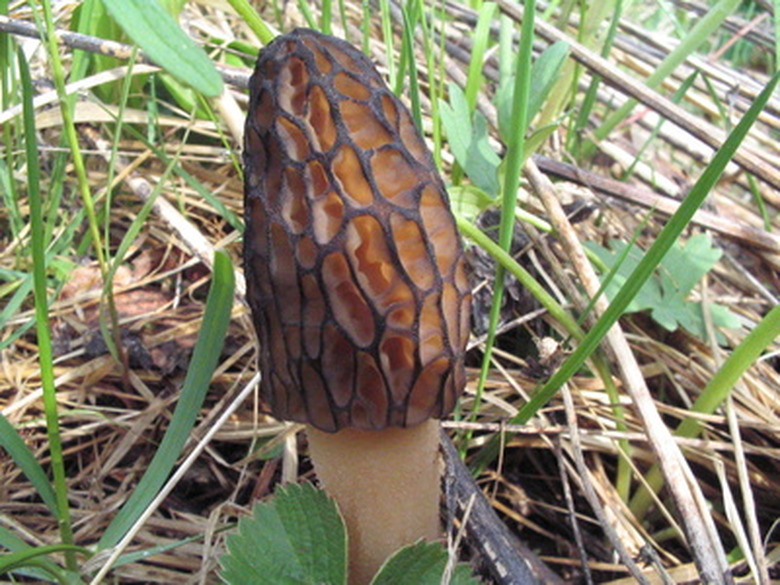How To Identify Ohio Wild Mushrooms
Fungi form a kingdom of their own, separate from plants and animals. Most live by decomposing organic material. Thin thread-like strands called hyphae form a mycelium. When conditions are right, some fungi–mostly of the basidiomycete group–send up a fruiting body from the mycelium, which we call a mushroom. When it is mature, it releases spores, which are the equivalent of plant seeds. Ohio has over 2000 species of mushrooms. Many are edible. Some are poisonous, even fatal, if eaten, so identification is important.
Consult Knowledgable People
Step 1
Join a mycological society. The Ohio Mycological Society leads regularly scheduled mini-forays and has a newsletter called "The Mushroom Log." The North American Mycological Association (NAMA) conducts forays, workshops and conferences.
Step 2
Participate in Ohio's annual mushroom hunt at Tar Hollow State Forest in Vinton County. Mushroom hunting seminars are held throughout the day.
Step 3
Become familiar with mycologists and extension professionals at nearby colleges and universities. They are often willing to help with identification. There are many unnamed or seldom seen fungi that you cannot identify that they would be interested in.
Use References
Step 1
Check out library books or purchase your own copies of guides to mushrooms. Some are listed in Resources. These books deal with commonly encountered species of North American mushrooms. It is estimated that there are over 10,000 species in North America, so no one source can be comprehensive. Use keys, photos and descriptive information to help with identification.
Step 2
Go online to consult photos and information. Rogers Mushrooms has searchable images of 1500 mushroom species and Cal Photos has over 5000 photos of fungi .
Step 3
Visit colleges, universities and mycological associations. Most have reference collections of dried and preserved mushrooms.
Conduct Your Own Studies
Step 1
Take photos of mushrooms to document your findings and to help with expert identification if needed. Compare with photos of known species.
Step 2
Keep records of where the mushroom was found, what type of environment it occupied, what it smelled like, and what it was growing on. Compare with information on identified mushrooms.
Step 3
Make your own mushroom spore print. The color and discharge pattern of spores are definitive in making identifications. Refer to field guides for keys to spore patterns and colors.
Step 4
Make a collection of mushroom specimens. Mushrooms can be dried and preserved for future reference. Stored carefully, they keep indefinitely and can help with past and future identifications. Accompany specimens with ecological information and a photo.
Things Needed
- Reference books
- Computer with Internet access
- Camera
- Pencil
- Paper for field notes
References
Cite This Article
MLA
Csanyi, Carolyn. "How To Identify Ohio Wild Mushrooms" sciencing.com, https://www.sciencing.com/identify-ohio-wild-mushrooms-7257304/. 22 November 2019.
APA
Csanyi, Carolyn. (2019, November 22). How To Identify Ohio Wild Mushrooms. sciencing.com. Retrieved from https://www.sciencing.com/identify-ohio-wild-mushrooms-7257304/
Chicago
Csanyi, Carolyn. How To Identify Ohio Wild Mushrooms last modified March 24, 2022. https://www.sciencing.com/identify-ohio-wild-mushrooms-7257304/
